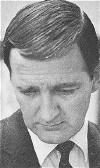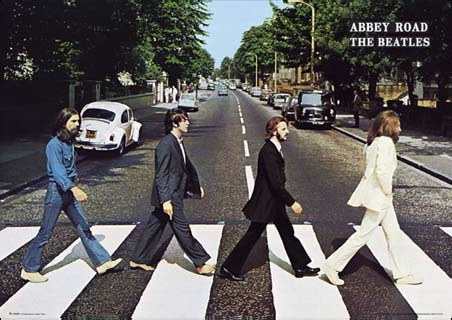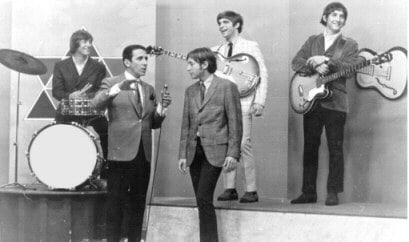Jim Jeffries
By Scott Westerman – Curator Keener13.com
 He had the job we all wanted, the foot in the door at the greatest radio station in town. In the world that was radio back in the 1960s, the overnight shift was the proving ground, the place where the program director tested new talent, and the assignment from whence stars were often born.
He had the job we all wanted, the foot in the door at the greatest radio station in town. In the world that was radio back in the 1960s, the overnight shift was the proving ground, the place where the program director tested new talent, and the assignment from whence stars were often born.
Some loved the lifestyle and made overnights their brand. WJR’s Jay Roberts was one of the most famous, helping us drift off to sleep for over two decades as the captain of “Nightflight 760”.
Jim Jeffries had a different idea. When he came to Detroit from Keener’s Battle Creek sister station, Jim knew that even with WKNR’s highly directional nighttime signal, there were thousands of people out there who depended on the overnight guy to keep them awake and entertained. Continue reading “Jim Jeffries” →
The Beatles Still Rule
By Scott Westerman – Curator, Keener13.com
 As many Keener fans know, 09/09/09 was the date when two big Beatle events took place. The Beatle iteration of the incredibly popular Rock Band video game was released. And the entire Parlophone Beatle catalog was re-released in digitally remastered form.
As many Keener fans know, 09/09/09 was the date when two big Beatle events took place. The Beatle iteration of the incredibly popular Rock Band video game was released. And the entire Parlophone Beatle catalog was re-released in digitally remastered form.
Those of us who saw the Beatles Love show in Vegas, and bought the associated CD, marveled at the magic that Fab Four producer George Martin, and son Giles Martin, worked. We’ve worked their re-mix of “Get Back” into the rotation.
The same attention to detail has been given to the Beatle catalog we all bought as 45s, LPs and CDs over the years.
The question many have been asking this week is, “Is it worth the money?” With the Beatle re-master box priced north of $200 bucks, is the quality really THAT much better to justify shelling out the bucks again? Continue reading “The Beatles Still Rule” →
Ellie Greenwich: the magic behind the music
By Scott Westerman – Curator Keener13.com
 Once upon a time, there was a place where poets and composers gathered to create true magic. If you stepped inside the Brill Building during the Keener era, you were likely to hear a half dozen pianos playing at once. If you were a time traveler from the future, you would instantly recognize artists who would later bloom into the most celebrated performers of the decade. Some, like Niel Sedaka, were already stars. Others, like Carole King, were still writing hit records for others. At it’s height, Brill was home to some of the greatest songwriting teams of the rock era: Hal David and Burt Bacharach, Carole King and Gerry Goffin, Barry Mann and Cynthia Weil. Continue reading “Ellie Greenwich: the magic behind the music” →
Once upon a time, there was a place where poets and composers gathered to create true magic. If you stepped inside the Brill Building during the Keener era, you were likely to hear a half dozen pianos playing at once. If you were a time traveler from the future, you would instantly recognize artists who would later bloom into the most celebrated performers of the decade. Some, like Niel Sedaka, were already stars. Others, like Carole King, were still writing hit records for others. At it’s height, Brill was home to some of the greatest songwriting teams of the rock era: Hal David and Burt Bacharach, Carole King and Gerry Goffin, Barry Mann and Cynthia Weil. Continue reading “Ellie Greenwich: the magic behind the music” →
Philip Nye: Then and Now
By Scott Westerman – Curator, Keener13.com
 WKNR was lucky to get Philip Nye. In 1963, the Ohio native already had a strong journalistic track record in his home state. But the allure of the Motor City and Knorr Broadcasting’s commitment to build a first rate news team brought him to Detroit. His eye for talent and his rock solid professionalism made WKNR Contact News the training ground for a generation of broadcast journalists. John Maher, Erik Smith, George Hunter and Bill Bonds are just a few examples.
WKNR was lucky to get Philip Nye. In 1963, the Ohio native already had a strong journalistic track record in his home state. But the allure of the Motor City and Knorr Broadcasting’s commitment to build a first rate news team brought him to Detroit. His eye for talent and his rock solid professionalism made WKNR Contact News the training ground for a generation of broadcast journalists. John Maher, Erik Smith, George Hunter and Bill Bonds are just a few examples.
During his tenure, WKNR won just about every news award in the book. He voiced a series of annual news retrospective albums that were donated to local schools and championed WKNR’s weekly Project Detroit program which took an in-depth look at the plethora of issues facing the Motor City.
From Keener, Nye went on to a stellar broadcast career as a reporter and anchor in Los Angeles, and as News Director for WXYZ-TV. In 1979 he was named Vice President of News for ABC-TV in New York. From there he moved into broadcast management as GM at KGO-TV in San Francisco and later was a founding partner of Burnham Broadcasting which owned television stations in five markets. He retired as President and GM of WVUE-TV in 1995, returning to Detroit five years later.
 Ever the visionary, Nye realized that television’s future was tied to hyper local programming and in 2001 he created a local cable news program for Shelby Township. “Shelby This Week” has aired weekly ever since with Nye serving as Executive Producer and Anchor.
Ever the visionary, Nye realized that television’s future was tied to hyper local programming and in 2001 he created a local cable news program for Shelby Township. “Shelby This Week” has aired weekly ever since with Nye serving as Executive Producer and Anchor.
Philip Nye joined Bob Green, Scott Regen, Michael Stevens and Pat St. John to help us recreate the WKNR sound during the 2003 Woodward Dream Cruise, providing Keener Contact News summaries of the key events of each year of the WKNR era during the weekend.
Keener fans in Shelby Township can still enjoy his extraordinary work on Comcast Cable Channel 10.
AIR CHECK: Hear Philip Nye on Keener in 1968.
Happy 40th – Abbey Road
 Another sign that we in the Keener generation have put some significant mileage on our tires.
Another sign that we in the Keener generation have put some significant mileage on our tires.
The famous photo shoot for the cover of Abbey Road, one of our favorite Beatle albums, turns 40.
The cover has been endlessly imitated and fans microscopic study of it’s supposed symbolism spurred more rumors of Paul McCartney’s death,
Keener’s Westside Sister
It was the winter of 1964 and an alchemy of music, talent and timing were coalescing in suburban Detroit to take a small 5000 watt station in Dearborn to the top of the Motor City radio ziggurat. WKNR had arrived. And Mrs. Knorr began to think about how Keener’s success might be duplicated across the Knorr Broadcasting portfolio.
Besides the obvious financial benefits, having Keener clones in the family could provide a built-in farm team, where talent could marinate until they might be ready to move up to the majors. The programming concept of “intelligent flexibility” could test new ideas in multiple markets, bubbling up best practices with the speed of a Beatle record climbing the WKNR Music Guide.
Across the state in Battle Creek, station WELL made the transformation. It became WKFR, Keener 14. PAMS cut jingles identical in nearly every way to those that were winning the battle in Motown, and a group of Battle Creek Keener Keymen emerged as the most popular personalities in West Michigan.
Knorr Broadcasting sold the station in 1967, but the Keener legend is still alive in Battle Creek. A local weblog helped initiate a recent reunion of WKFR personalities that was chronicled in the local paper, along with another story about Keener 14s glory days.
Read the list of WKNR personalities and you’ll recognize some very familiar Detroit radio names.
Thanks to Tom Ryan for sharing the links!
Iggy Pop on Miami: ‘I was looking for an elegant coma’
Ann Arbor’s own punk prince (and WKNR FM mainstay) has adopted Miami. Here’s a tour, conducted by the man himself.
Temps n Tops at DTE
Otis Williams talks with Susan Whitall about tonight’s Temps n Tops show at the DTE center.
Soupy Sales and those “Green Pieces of Paper”
From 1993. The king of Detroit’s kids television tells the tale of the prank that got him suspended. It’s wonderful to hear that voice again.
New in the Aircheck Archive
 In November of 1966, WKNR was still riding the wave as the dominant Top 40 radio station in the Motor City. It was a time when Keener bumper stickers were available at all Detroit area Sinclair stations, the film Endless Summer was playing at better theaters and listeners could win a 1967 Pontiac GTO. Stop sets on the weekends consisted of a single commercial unit, you were never more than 60 seconds away from the music.
In November of 1966, WKNR was still riding the wave as the dominant Top 40 radio station in the Motor City. It was a time when Keener bumper stickers were available at all Detroit area Sinclair stations, the film Endless Summer was playing at better theaters and listeners could win a 1967 Pontiac GTO. Stop sets on the weekends consisted of a single commercial unit, you were never more than 60 seconds away from the music.
Keenerfan Jim Feliciano shares this gem from November 26th, 1966. Paul Cannon spent most of his work week as Keener’s music director, but during the weekends, he got to exercise his on-air chops. Our 10 minute segment features deep tracks from Hermans Hermits and BJ Thomas, oldies from the Sherry’s and the Edsels, and WKNR Music Guide entries from Jackie Wilson, Nancy Sinatra, Jimmy Ruffin.
Think Rational
By Scott Westerman – Curator, Keener13.com
 Michigan had its share of great garage bands. The Unrelated Segments, The Wanted, The Tidal Waves, ? and the Mysterians, the Frost and Silverhawk all come to mind. But none were better than the Rationals. For those of us who grew up with electric guitars in our hands in mid-60s Ann Arbor, Scott Morgan‘s band was our role model.
Michigan had its share of great garage bands. The Unrelated Segments, The Wanted, The Tidal Waves, ? and the Mysterians, the Frost and Silverhawk all come to mind. But none were better than the Rationals. For those of us who grew up with electric guitars in our hands in mid-60s Ann Arbor, Scott Morgan‘s band was our role model.
They had a lean, tight sound that was a mixture of early Beatles and Stones with a Blues edge and attitude that Bob Seger was parallel processing across town, and Iggy Pop would further distill into what would become punk rock.
Their brief prime generated two singles that found their way onto the WKNR Music Guide. Otis Redding was first to market with “Respect” and many remember Aretha’s 1967 version as the biggest seller, but it was the Rationals who peaked at number 6 one year earlier on Keener with what many feel is the ultimate incarnation of the song.
“I Need You” was their second Keener hit. The plaintive tome became a slow dance favorite during the ice cold winter of 1968, reaching number 4 the same week that Paul Muriat’s “Love is Blue” was number 1.
When the band broke up in 1970, there were the usual hassles with the record company and it’s only now that a definitive collection of Rational gems is coming to market. “Think Rational” features 34 tracks, including pristine remasters of the hits and audio insight into the band’s influences and a look behind the scenes with rehearsal tracks and demos that never saw the light of day, until now.
Brian McCollum writes in detail about the new Rationals collection over at Freep.com.
John Landecker in his prime
From Ann Arbor, via Michigan State University, via Philly, John Landecker talks about his radio career and life at WLS in 1977. The Ann Arbor guy who gave him his first job was Ted Heusel at WPAG.

